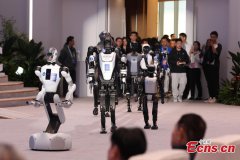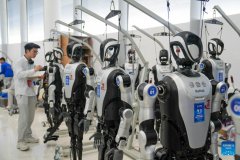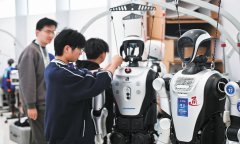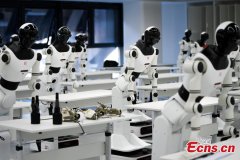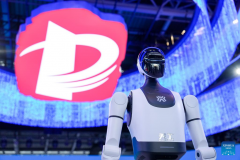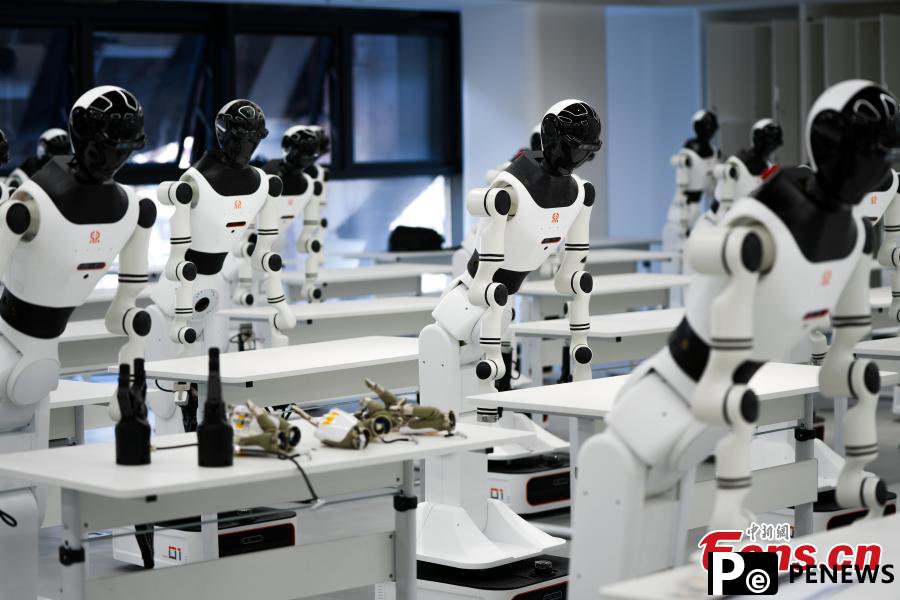Home>>
China's first heterogenous humanoid robot training facility set to put into useBy Du Qiongfang (Global Times) 09:46, April 08, 2025
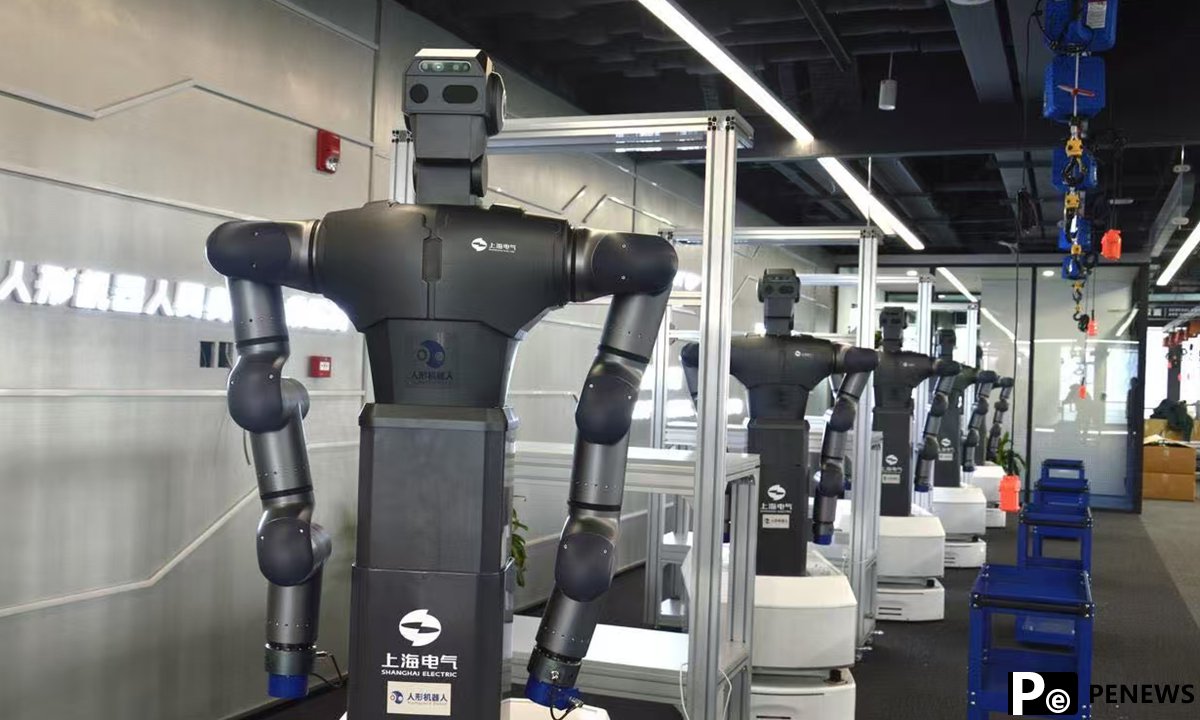
During the first phase of the project, the robots will be trained with approximately 45 atomic skills such as grasping, picking, placing and transporting for establishing an atomic skill library for robotic manipulation tasks in specific scenarios, such as industrial and service scenarios, Yang Zhengye, director of market systems of the National and Local Co-built Humanoid Robotics Innovation Center, told the Global Times on Monday.
"The embodied robots being trained at the center are expected to accomplish more complex tasks requiring a sequence of actions based on their autonomous judgments formed through searching and matching the data collected through training," Yang said.
In order to accomplish a task, the robots will be trained to understand human's instructions, break the task down and then finish it by using visual and motion data, he said.
At the center, humanoid robots continuously practice actions such as "grasping" by replicating movement data collected from human trainers.
According to a data collector, generating data, collecting data, augmenting data, and analyzing data are the most fundamental core tasks at the training center. A single action may need to be repeated up to 600 times a day by a data collector for the robots to learn from. For humans, the action of "grasping" is simple, but for robots, even small differences in the size, shape, and placement angle of the object being grasped will generate different data, The Paper reported.
At the training center, robots of various sizes simultaneously undergo training for different scenarios and tasks, focusing on 10 key scenarios, including industrial, domestic, and tourism services. These tasks are broken down into specific actions, such as folding clothes, picking up and moving objects, organizing shelves, and cleaning large equipment in dangerous environments.
According to Yang, the training center is currently undergoing testing and adjustments, and is capable of generating 20,000 to 30,000 data entries daily. It is expected to enter full operation in July, with a daily output of up to 50,000 data entries. It is expected that the collection of over 10 million real-machine data entries will be achieved within the year.
In the future, the center plans to establish a data exchange platform, allowing robot companies to share data from different scenarios, such as home appliances or healthcare, reducing duplication and greatly improving efficiency.

